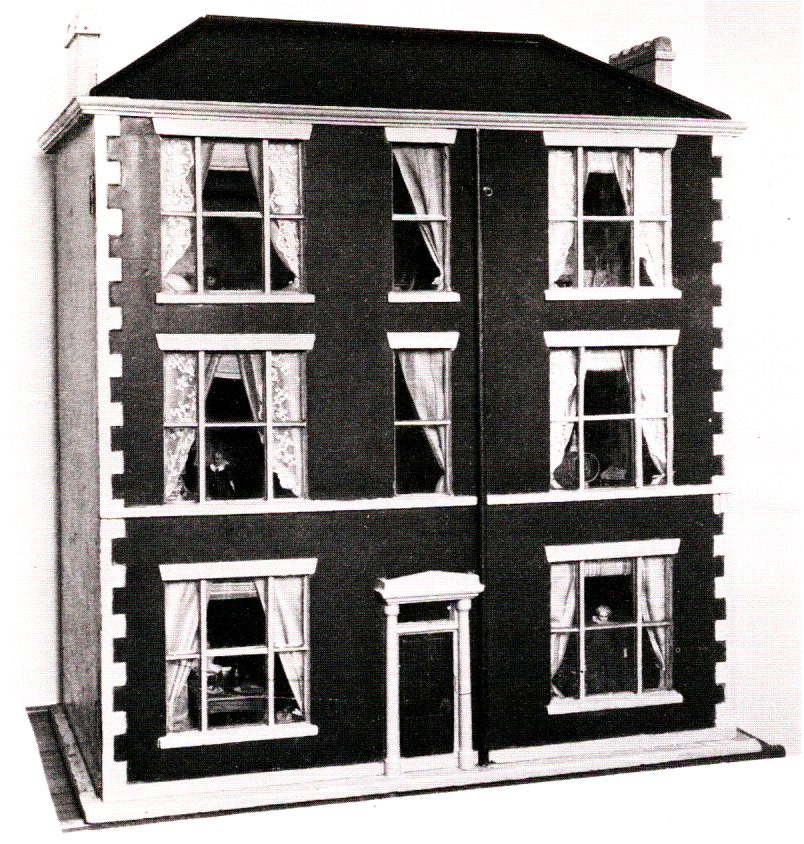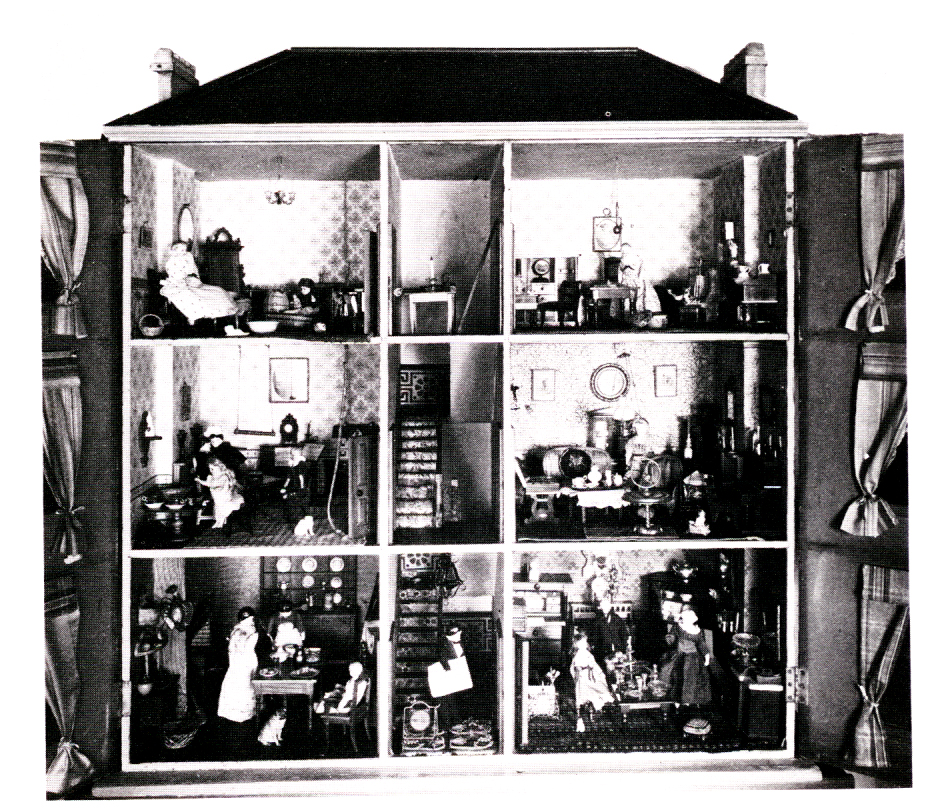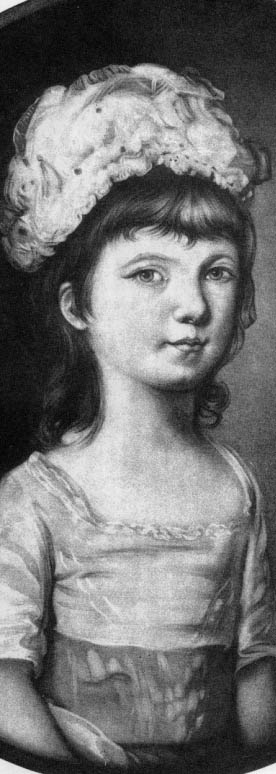When Titania is around her parents or her governess, she has certain
activities that she is expected to do, like practice her scales on the
piano or work on her cross-stitch sampler. Her parents have also bought
her a few dolls, and she is starting to collect different clothes for
them.
Titania loves to take a day trip to the museum or go to see a pantomime
show. When she gets a few minutes to play outside in the courtyard with
her girlfriends, they enjoy skipping rope or having tea with their
dolls.
Dolls have been popular for many centuries, and the Eighteenth-Century is
no different. However, during this time period, dressing the dolls became
a very popular and exciting practice. French dressmakers would send their
fashions to England to display on the dolls.
14
These fashions were made of luxious fabics such as velvets, sation,
lace,
fur, and jewels. Doll clothes were very expensive. Those who could afford
to buy them might only have one or two dresses for their doll.
'Shire Hall', interior and exterior
of a doll's house

The Carousel,
Unknown

 Also brought over from France during the Eighteenth-Century were dolls'
houses, or "baby houses", as they were then called.
15
The furniture was so beautiful and ornate, that even adults played with
these toys. Doll houses would contain spinning wheels, tables with silver
tops, basin, candlesticks, cups and saucers, tea pots, silverware, and
much more.
Also brought over from France during the Eighteenth-Century were dolls'
houses, or "baby houses", as they were then called.
15
The furniture was so beautiful and ornate, that even adults played with
these toys. Doll houses would contain spinning wheels, tables with silver
tops, basin, candlesticks, cups and saucers, tea pots, silverware, and
much more.

While lower-class young girls had to spend time sewing and mending clothes for the family, girls like Titania had maids who took over that duty. These girls did ornamental needlework, such as samplers. There were long and narrow, sometimes measuring in only two or three inches either way, and were stitched upon canvas 273. These samplers had designs, animals, maps, or landmarks from nature. Girls might also stitch the alphabet, numbers, or a Bible verse. It is also questionable how much needlework affected the health of these young girls. It is assumed that their eyesight suffered, and they could have possibly suffered from lathargy, fainting fits, and general hysteria.18

